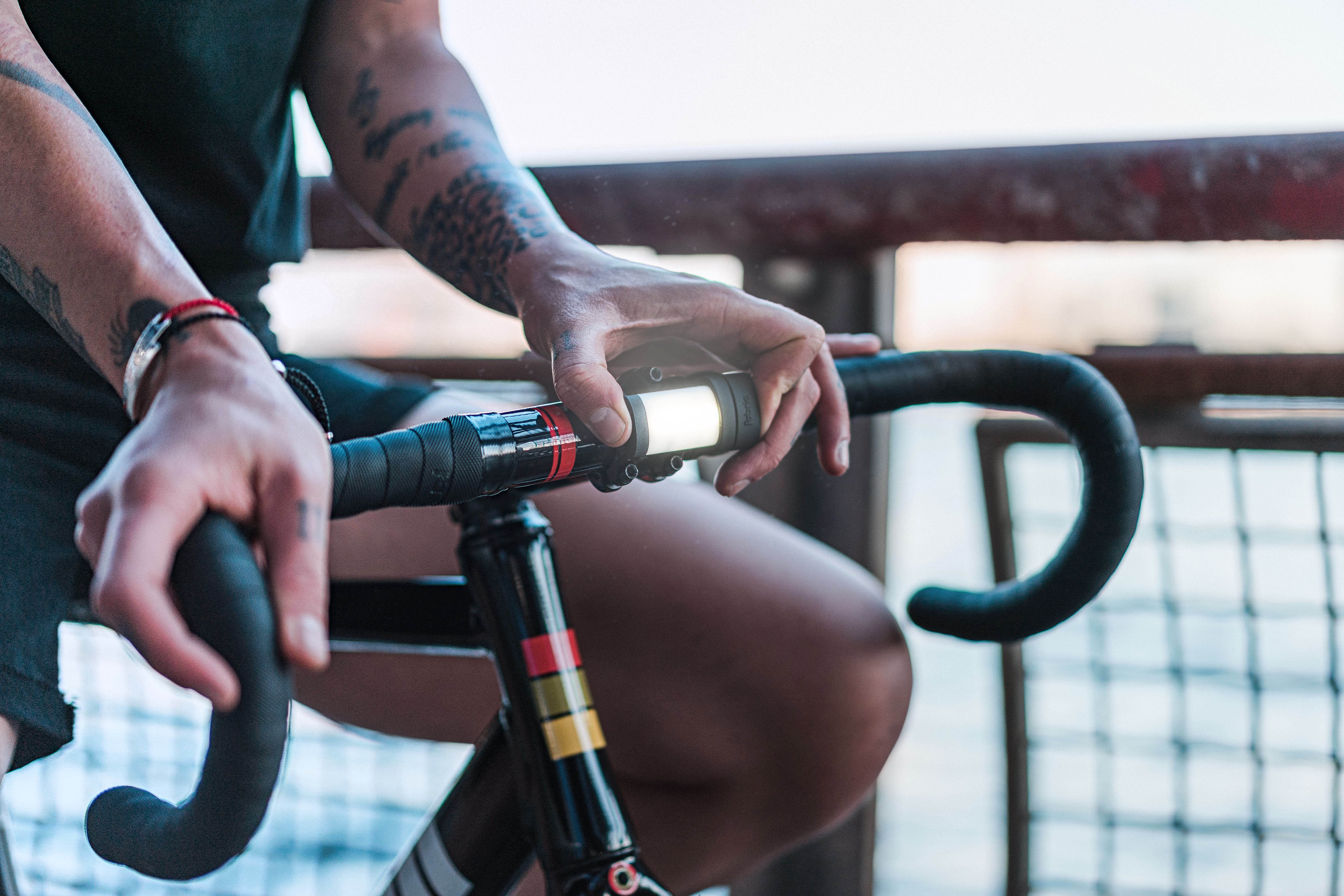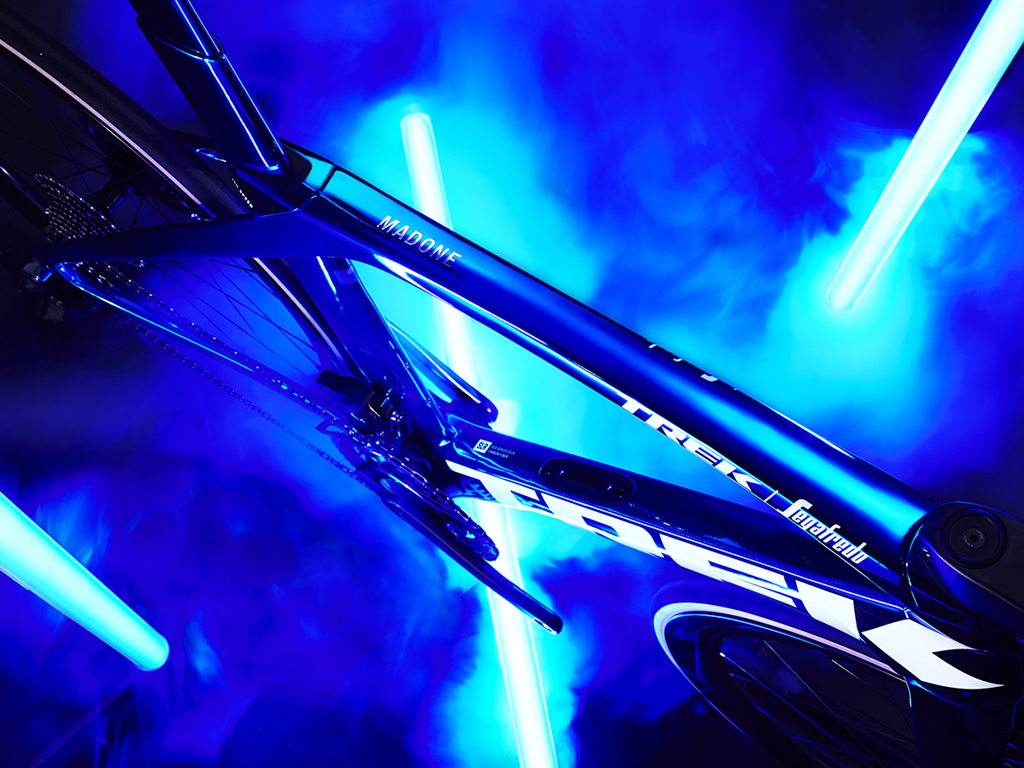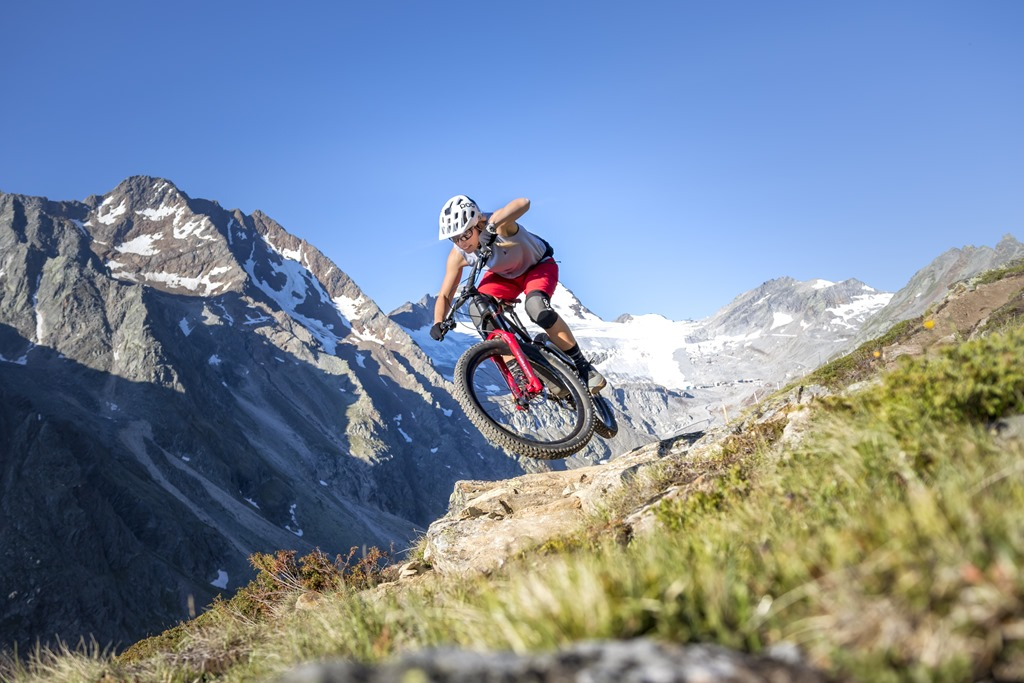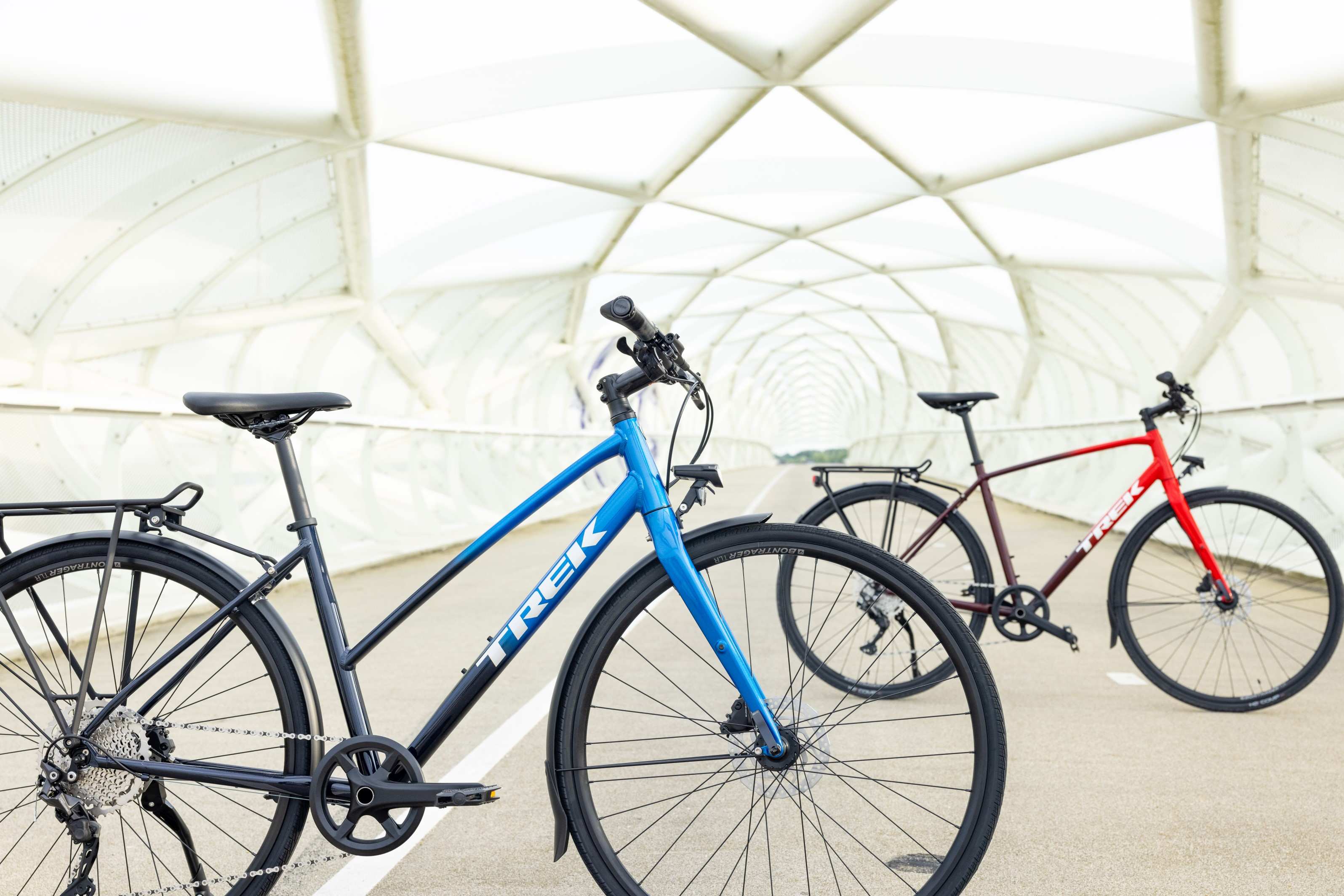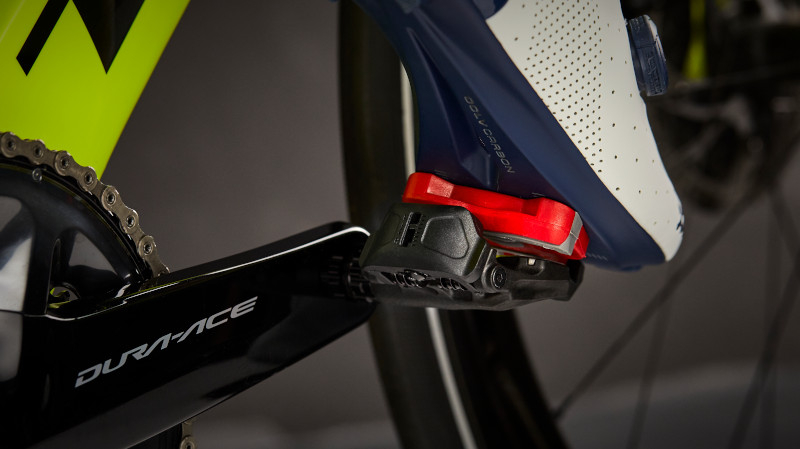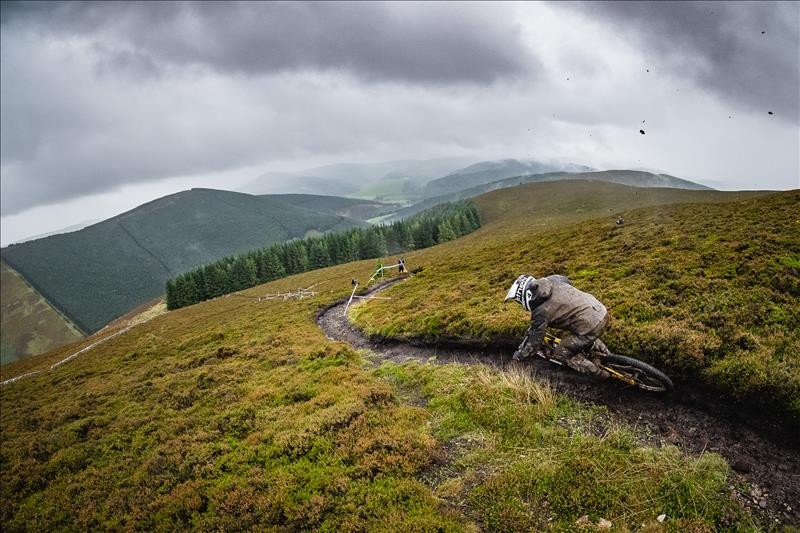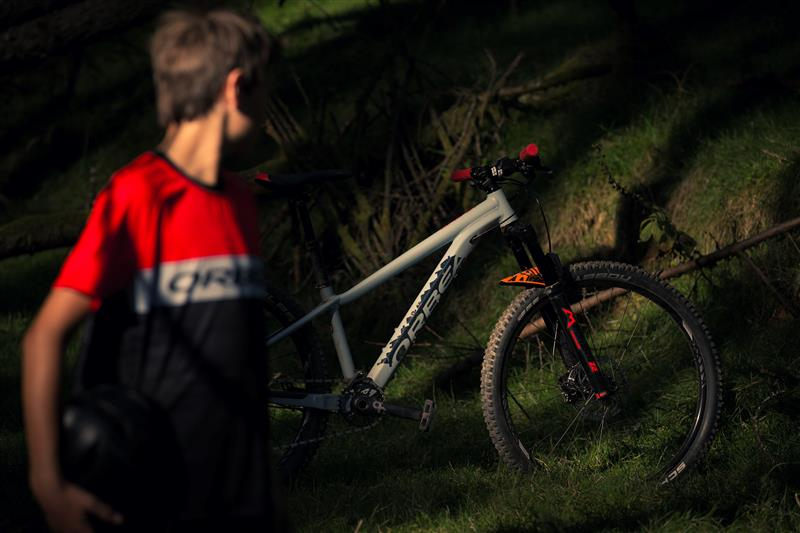Guide To Road Bike Gears
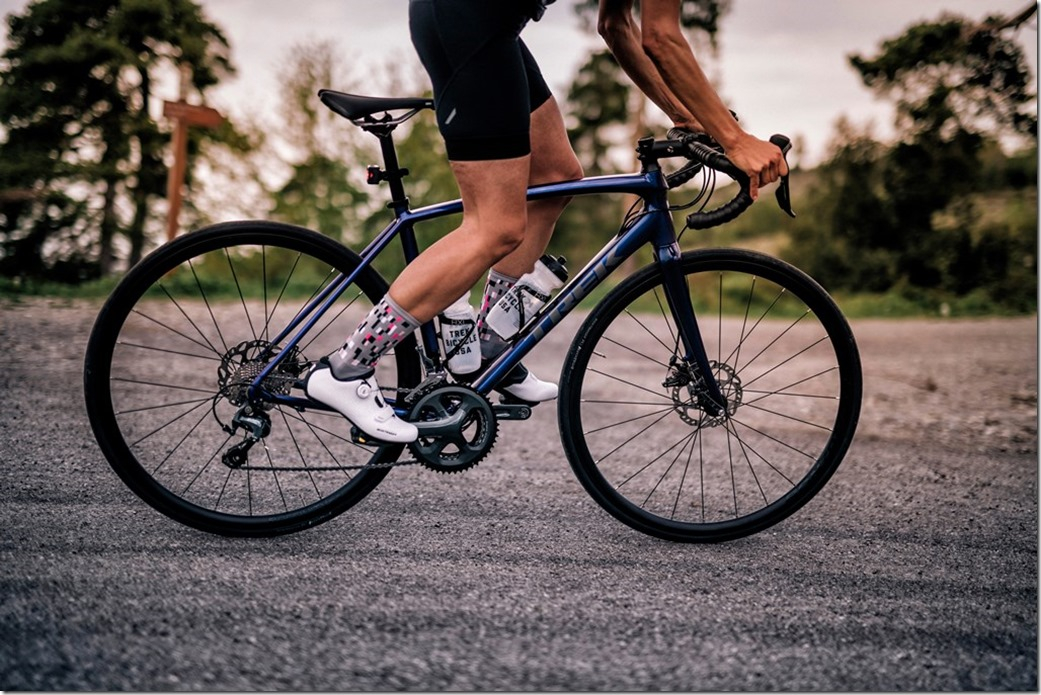
Guide To Road Bike Gears
Cycles UK Guide To Road Bike Gears. If you are buying a road bike one of the big differences between models will be which gears they use. Most manufacturers will make the same bike, using the same frame but putting different gears and wheels on it. So for instance you can buy a Trek Domane AL 2 Disc with Shimano Claris gearing for £975 or get the Trek Domane AL 4 Disc with Tiagra gearing for £1625. They are fundamentally the same bike. One comes with the Shimano Tiagra gears and the other comes with Shimano Claris gears.
In most cases, the bottom of the range gears and top of the range gears will basically work in the same way. The big differences are in the quality of material used and the weight. Top of the range gears will be lighter and smoother to use.
One thing to watch out for when comparing bikes is whether the full groupset is being used. If you are buying a bike that has Shimano 105 gears on it. Shimano makes 105 brakes, gear levers, front and rear derailleurs, cranks, chainrings and bottom brackets. So basically all of the running gear on the bike. Some bike manufacturers will fit the full groupset, others will fit Shimano 105 front and rear derailleurs but use their own brakes and cranks to save a few pounds. So if you are comparing bikes be sure to check how much of the groupset the bike actually uses.
How many gears do you need?
Gear technology is moving pretty quickly at the moment. The current standard for road bikes is 11 speeds. That means 11 gears on the back and two on the front giving 22 gears in total. However, 12-speed options are becoming increasingly common and some people are experimenting with single chainrings at the front (1x setups). If you buy a 9 or 10-speed bike it will be very expensive to upgrade to 11 speed later on as you will need new shifters, and maybe a new rear wheel, as well as a new derailleur, chain and cassette. So if you can afford 11, or 12, speed go for it.
Think about maintenance costs
If you plan on using your bike a lot, and keeping it more than a year or two, then you will end up having to replace bits. The first things to go other than brake pads are normally the chain, cassette and rear derailleur. If you ride your bike during the winter or commute on it then things will wear out more quickly as dirt from the roads wears away the parts. A new Shimano Dura-Ace rear derailleur is going to cost you well over £200 while a new cassette and chain will set you back over £250. The equivalent 105 derailleurs would be under £50 and a 105 chain and cassette would be under £100. So if you regularly ride dirty gritty roads think about whether you really need that top of the range Dura-Ace setup.
Mechanical or Electric
Many bikes above £3000 now come with Di2 or eTap gearing. This is where your gears are moved by small electric servos motors rather than a metal cable. The electronic gears give more precise shifting which needs less pressure on the gear levers. You just tap the lever and the gears shift, as opposed to on a mechanical setup where you may have to push the lever with some force and then risk it shifting 2 or 3 gears at a time.
Electronic gearing is definitely the way things are moving, with prices coming down every year, but at the moment you will be paying a premium for them. You also need to think about the replacement costs. Where a new mechanical rear derailleurs will range from £50 to £200. With electronic systems you will be looking at £200 to £500.

Shimano Gear Range Order
Most of the road bikes we sell use Shimano gears. Shimano has a reputation for making super reliable equipment and, as they are widely used, it’s really easy to get spares. Currently, Shimano makes traditional ‘mechanical’ gears and the new electronic Di2 gears. The mechanical gears use a cable and springs to change the gears. The Di2 gears use electric switches which are much more precise and need less tuning to keep running smoothly. There are also disc and rim brake versions of most Shimano gears available.
From top to bottom the Shimano road bike gears order is:
- Shimano Dura-Ace – Fitted to pro level top of the range bikes. Dura-Ace is available in Di2 and disc brake versions.
- Shimano Ultegra -The choice of many experienced riders. Almost as smooth as Dura-Ace, just a bit heavier and a lot cheaper to maintain. Available in Di2 and disc brake versions.
- Shimano 105 – Super reliable workhorse gears may not be quite as smooth or as light as Ultegra but plenty good enough for most riders and much cheaper to maintain. Available in disc brake and Di2 versions.
- Shimano GRX - this is Shimano's dedicated gravel gearing system which you sometimes find being used on road bikes as well. It is generally found on bikes over about £2000 and is available in both mechanical and Di2 versions.
- Shimano Tiagra – normally fitted on bikes in the £1200 to £1600 price range Tiagra gears are solid and do the job but they are currently only available in 10 speed versions. You can now get them with bot mechanical rim brake or hydraulic discs.
- Shimano Sora – normally fitted to bikes in the £800 to £1200 price range. Currently only available in 9 speed mechanical rim brake versions. Many people consider these to be the first ‘proper’ Shimano groupset.
- Shimano Claris – Normally fitted to entry level bikes under £800. Claris gears are basic but do the job. They currently only come in 8 or 9 speed mechanical rim brake versions.

SRAM Gear Range Order
SRAM gears are less common than Shimano but do come fitted on a number of bikes we sell. In particular, SRAM gears are finding their way onto a lot of gravel, adventure and cyclocross bikes as they make 1x versions of most of their gears. This means using a single chainring at the front and a wider gear range at the back. 1x setups are becoming the standard in mountain biking and are widely seen as being easier to maintain when they encounter a lot of mud and dirt. The levers on SRAM gears do work slightly different from Shimano with a double-tap system for shifting which takes a little bit of getting used to if you are used to Shimano.
SRAM love an acronym so you'll see that some of their gears have eTap AXS as part of their name. eTap means they are electronic shifting, the same as Shimano Di2. The AXS bit means that the gears can connect to SRAM's App to tune the performance of your gears and update them.
From top to bottom the SRAM road bike gears order is:
- SRAM XPLR AXS - XPLR is SRAM's gravel groupset. It is designed so you can easily mix and match cassettes, cranks and derailleurs to get your own setup. You can also mix and match XPLR with a lot of SRAM's other components and there are Red, Force and Rival versions of the XPLR rear derailleur.
- SRAM Red AXS– Equivalent to Shimano Dura Ace, SRAM Red is the pro-level setup used on many race-winning bikes. Their electronic system is known as eTap and is totally wireless so you can have super clean lines on your bike. Red comes as a 12 speed eTap version only. SRAM Red is also available with built in power meters for riders who are serious about their training.
- SRAM Force – Force is often looked at as an equivalent to Shimano Ultegra but this is a groupset which has been used by pro teams. It comes as a 12 speed eTap AXS or an 11 speed mechanical setup. Force is also available from SRAM as a 1x setup which can be used on road, cyclocross and adventure bikes.
- SRAM Rival – Equivalent to Shimano 105 Rival is a good value groupset designed for long training rides. It is available in 12 speed eTap AXS or 11 speed mechanical versions.
- SRAM Apex – The entry-level SRAM groupset is equivalent to Shimano Tiagra. Apex comes in a compact setup (small chainrings at the front, big at the back) or 1x making it a very training and leisure focussed set up rather than an out and out road race one. The 1x version is available with disc or rim brakes whereas the standard double chainring version is rim brake only.

Campagnolo Gear Range Order
Campagnolo is a classic Italian gear manufacturer. Responsible for many of the innovations that modern gears are based on Campagnolo still make cutting edge, race-winning, equipment. Campag (as it is often known) doesn’t come fitted on many bikes we sell and it can sometimes be hard to get spares but Campag is still the choice for many purists. Italian road bikes have long been seen as something a bit special, something with a little extra class. If you are going to have an Italian road bike then it needs to come with Campagnolo.
From top to bottom the Campagnolo gear order is:
- Campagnolo Record and Super Record – The top of the range setup is the Super Record. Standard Record is roughly equivalent to Shimano Dura-Ace and SRAM Red with Super Record being made of even fancier materials to make it that little bit lighter (think all carbon fibre derailleurs). Available in mechanical and electronic versions (EPS) and in disc brake versions.
- Campagnolo Chorus – Chorus sits between Shimano Ultegra and Dura-Ace in price. It’s a high-performance setup that’s available in mechanical and electronic versions and with disc or rim brakes.
- Campagnolo Portenza – a relatively new addition to the Campagnolo range it is seen as a direct equivalent to Shimano Ultegra and is available in disc or rim brake versions.
- Campagnolo Centaur – The equivalent to Shimano 105, Centaur is the entry-level Campagnolo groupset. Currently just available as an 11-speed mechanical rim brake setup.


